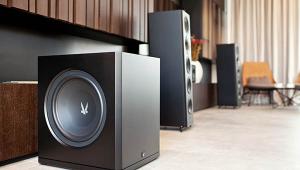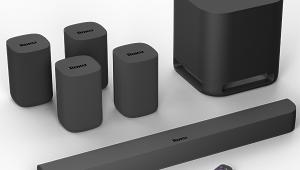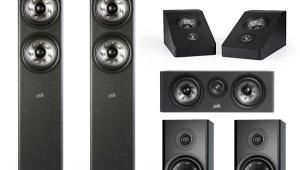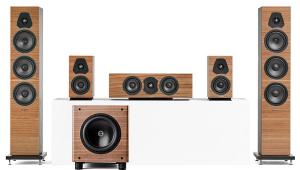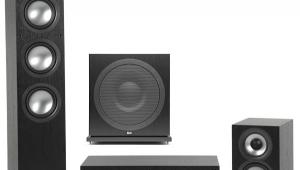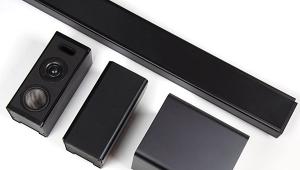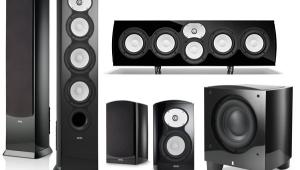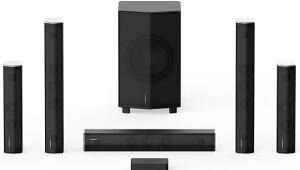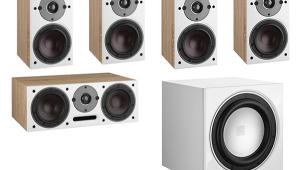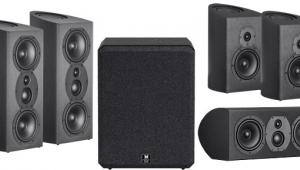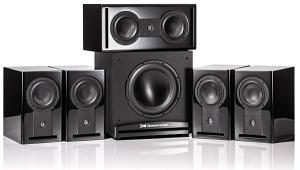Q Acoustics 3000i Series Speaker System Review Page 2
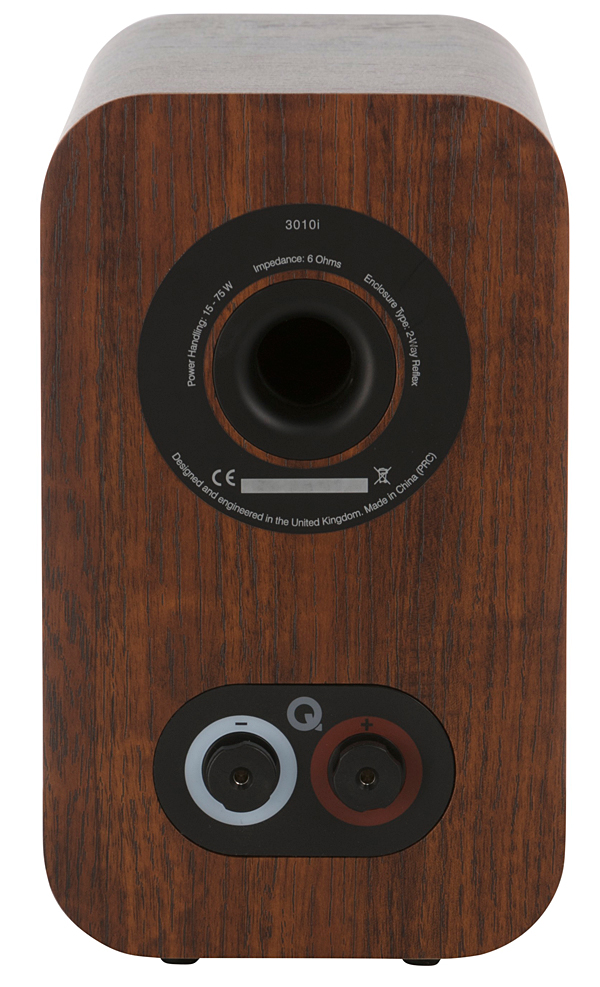
With many movie soundtracks mixed to the bright side, filmsound is a friend to warmer-sounding speaker designs. The Q Acoustics system certainly seemed to friend filmsound right back. I streamed Harry Potter and the Deathly Hallows: Part 2 and was rewarded with big, impactful sound (with or without the 3060S sub on board, more on which below), a satisfyingly deep presentation, and unfailingly crisp and intelligible dialogue.
 In the keystone position, Q Acoustics matches the towers with its 3090ci, a horizontal two-way center speaker that uses a pair of 4-inch woofers rather than the 6.5-inch units in the towers. On its own merits this is a very competent design, with clear, well-focused sound, though it was a little thinner on some male voices than many such dual-woofer centers, which I often find tend toward lower-mids excess and even over-fullness or “hoo.”
In the keystone position, Q Acoustics matches the towers with its 3090ci, a horizontal two-way center speaker that uses a pair of 4-inch woofers rather than the 6.5-inch units in the towers. On its own merits this is a very competent design, with clear, well-focused sound, though it was a little thinner on some male voices than many such dual-woofer centers, which I often find tend toward lower-mids excess and even over-fullness or “hoo.”
The 3090ci's crispness is not necessarily a demerit, but it made for a fairly sharp contrast with the 3050i towers. Comparing a range of announcers both male and female between centered- mono (3090ci) and dual-mono (tower pair) playback, all but a couple of higher-pitched female voices sound distinctly, even dramatically different on the center unit: brighter, with a more focused and prominent presence-range that tended to highlight different vocal formats to an easily noticeable degree. This is not altogether bad, but I also noted a timbral discontinuity in full-range, busy sequences like the bank-vault monorail-ride/dragon-escape sequence early in Harry Potter where front-stage cohesion seemed less complete than what I hear from my everyday speakers.
The 3060S subwoofer is fairly obviously the red-headed stepchild of this particular Q Acoustics suite. First, it's a very compact 8-inch sub, pack- aged not in the familiar cubical cabinet of most such designs, but in a small-suitcase format intended to nestle unobtrusively against a wall. It's equipped with big-subwoofer facilities like substantial class-D power and line-level-only signal input, and equipped with a delightful, magnetically fixed modesty panel that conceals cables, power-cord, and controls other than Crossover (frequency)and Level (volume). It's a very attractive design, and at $399 would be a very fair match with bass-limited systems based around soundbars or sub- compact satellites. (One based around a quartet of Q Acoustics 3010is might make a good deal of sense, and in a brief trial the small two-ways mated better with the 3090ci to my ear.) But in the context of the 3050i system, it seemed a clear outrider: an 8-inch sub beside a tower pair whose total low-frequency- driver cone area measures more than three times greater.
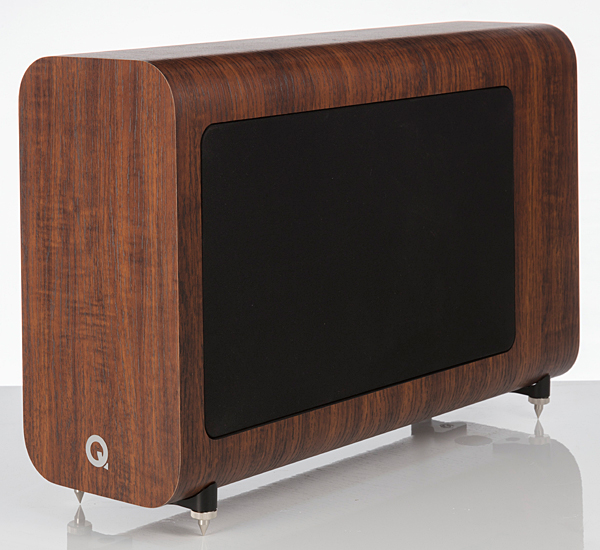
That said, Q Acoustics specify the little subwoofer with a useful bass limit (-6 dB point) of 35 Hz, and the 3050i towers at a surprisingly higher 44 Hz, but my ears did not fully agree. I had some difficulty finding film or music examples where the sub added much to the party. Setting my pre-pro's left/right high-pass crossover to a fairly low 60-Hz setting and dialing in the sub for optimum musical balance yielded a useful whole, with a slightly leaner, tighter bass character than the towers alone, and possibly a soup- spoon of additional extension. (This may well have had as much to do with placement as actual performance.) But I was challenged to find a case where adding the sub, regardless of crossover point, produced a noticeable extension of overall deep-bass quantity.
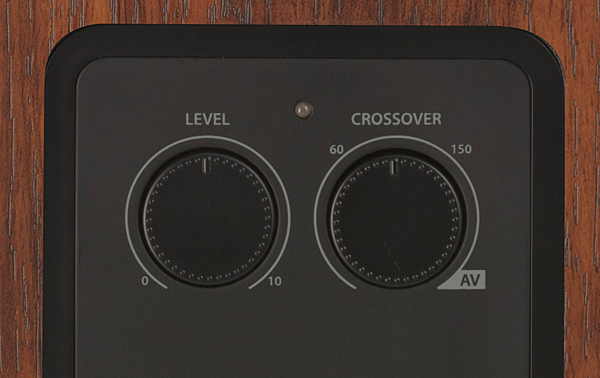
On their own, the 3050i towers delivered solid in-room lows, contributing content down to very nearly 35 Hz or so, as evidenced by familiar material such as the cannon-fire practice sequence from Master and Commander: The Far Side of the World and similar low-bass chestnuts. With the sub activated and goosed up a few dB, I could certainly match the overall deep-bass heft of the towers alone on filmsound, and with a slightly heavier effect. This might well have delivered a dB or two more of ultimate level—rather louder than any master level I'd likely call for in real life—but I nevertheless did not judge it to be a sufficient improvement. (As I plumbed the ultimate capabilities of the 3060S late in the review period. its amplifier failed while raising input signal level to about 1 volt. A second sample performed flawlessly and absorbed all the punishment I sent its way.)
Don't get me wrong: the 3060S is a terrific, uniquely configured 8-inch sub, and a strong value. But the simple fact is that Q Acoustics does not offer—yet, anyway—a subwoofer with enough deep-bass extension and output to make much sense paired with the 3050is.
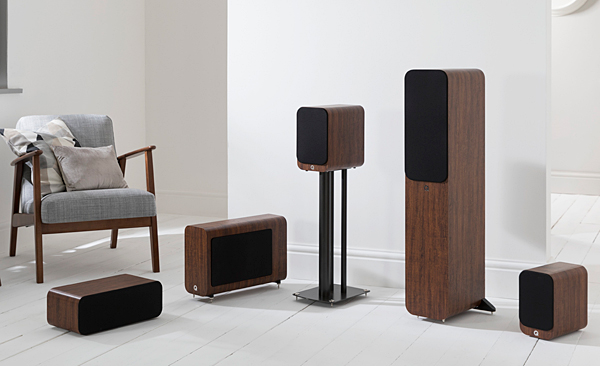
Conclusion
Outside of the subwoofer's slight contribution to the system, it is hard to find fault with this 3050i-based Q Acoustics array. Room constraints may, as with many tower designs, impose bass-balance challenges, but receiver- or preamp-based room/speaker correction, or the much simpler expedient of a bass control, can deal with much of that. (In fact, simply setting my pre-pro's bass to -1 largely mitigated the 3050i's slight remaining low-frequency excesses in my room.) Otherwise, getting a well-balanced 5.1 system with exceptional imaging capability for $1,499 -- a figure that includes a subwoofer you might not really need, or might find more useful in another room paired with another system—is a unique value.
